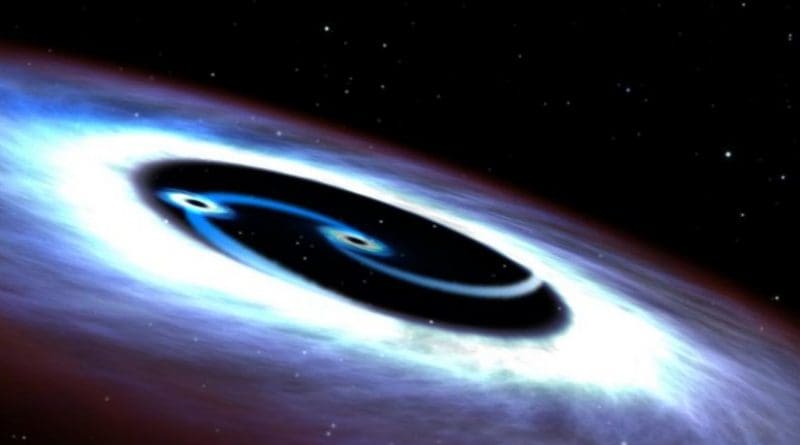Supermassive Black Holes Found In Quasar Nearest Earth
Two supermassive black holes in Markarian 231, the nearest quasar to Earth, were found using observations from NASA’s Hubble Space Telescope by a University of Oklahoma astrophysicist and his Chinese collaborator.
The discovery of two supermassive black holes–one larger one and a second, smaller one–are evidence of a binary black hole and suggests that supermassive black holes assemble their masses through violent mergers.
Xinyu Dai, professor in the Homer L. Dodge Department of Physics and Astronomy, OU College of Arts and Sciences, collaborated on this project with Youjun Lu of the National Astronomical Observatories of China, Chinese Academy of Sciences. Dai and Lu looked at ultraviolet radiation emitted from the center of the Mrk 231 from Hubble observations, then applied a model developed by Lu to the spectrum of the galaxy. As a result, they were able to predict the existence of the binary black holes in Mrk 231.
“We are extremely excited about this finding because it not only shows the existence of a close binary black hole in Mrk 231, but also paves a new way to systematically search binary black holes via the nature of their ultraviolet light emission,” said Lu, National Astronomical Observatories of China, Chinese Academy of Sciences.
“The structure of our universe, such as those giant galaxies and clusters of galaxies, grows by merging smaller systems into larger ones, and binary black holes are natural consequences of these mergers of galaxies,” said Dai.
Over time, the two black holes discovered by Dai and Lu in Mrk 231 will collide and merge to form a quasar with a supermassive black hole. A quasar is an active galaxy with an illuminated center, which is short lived compared to the age of the universe.

